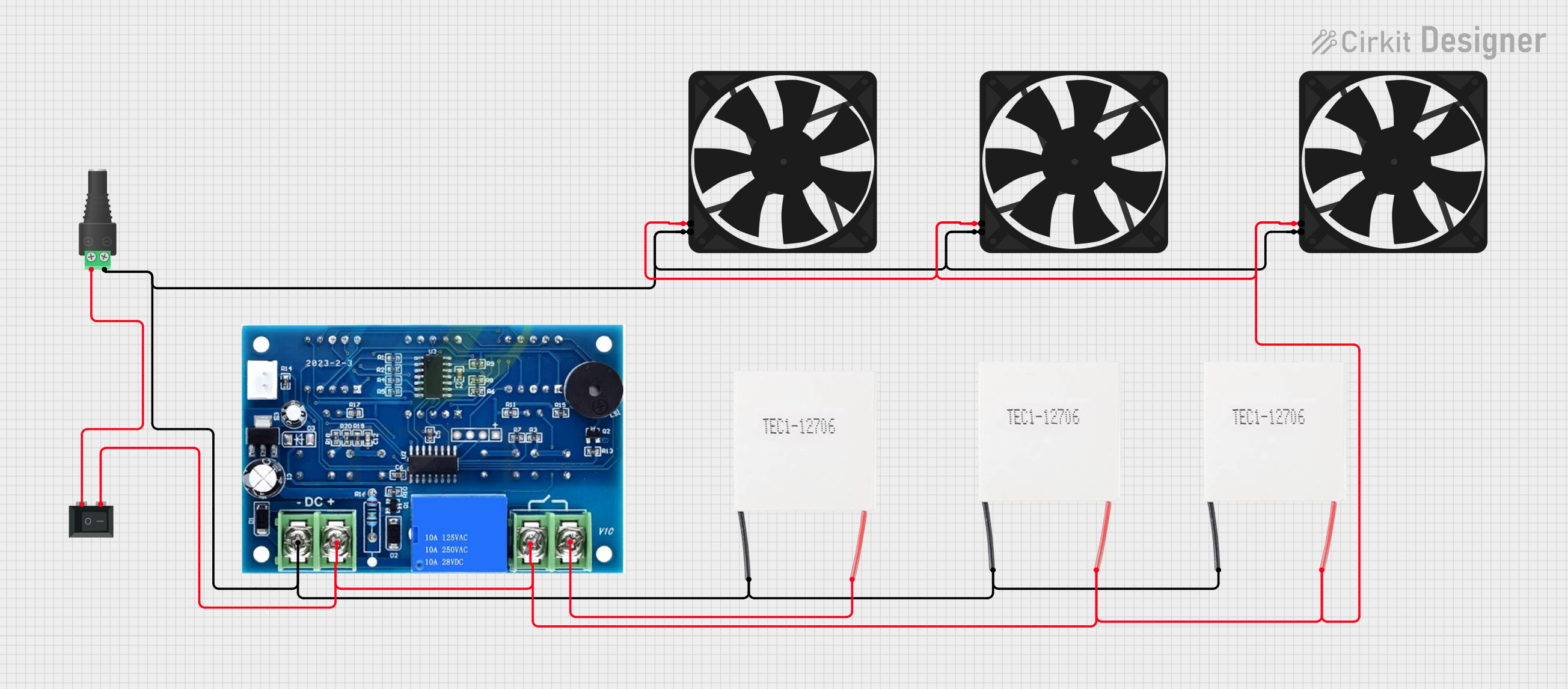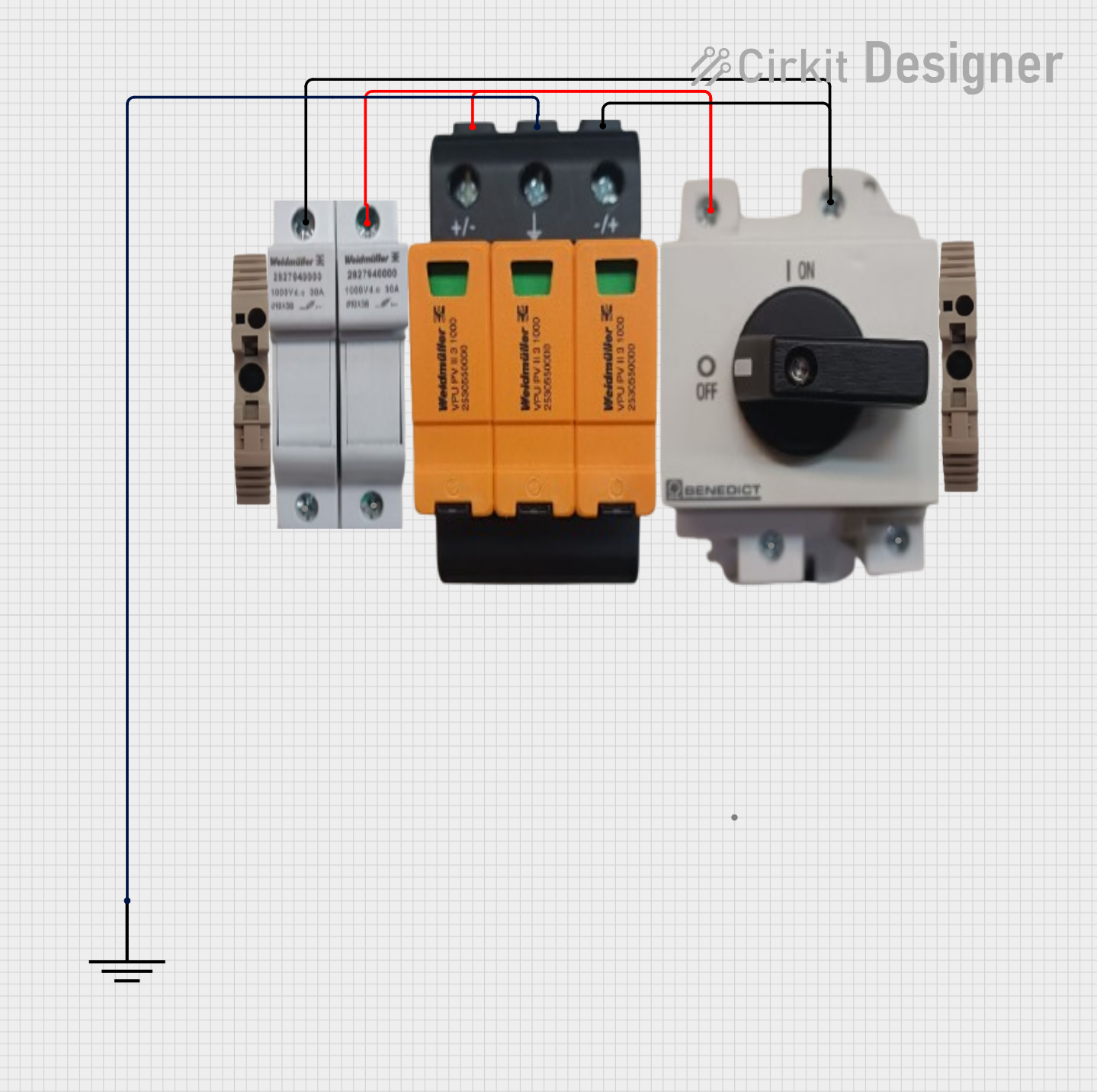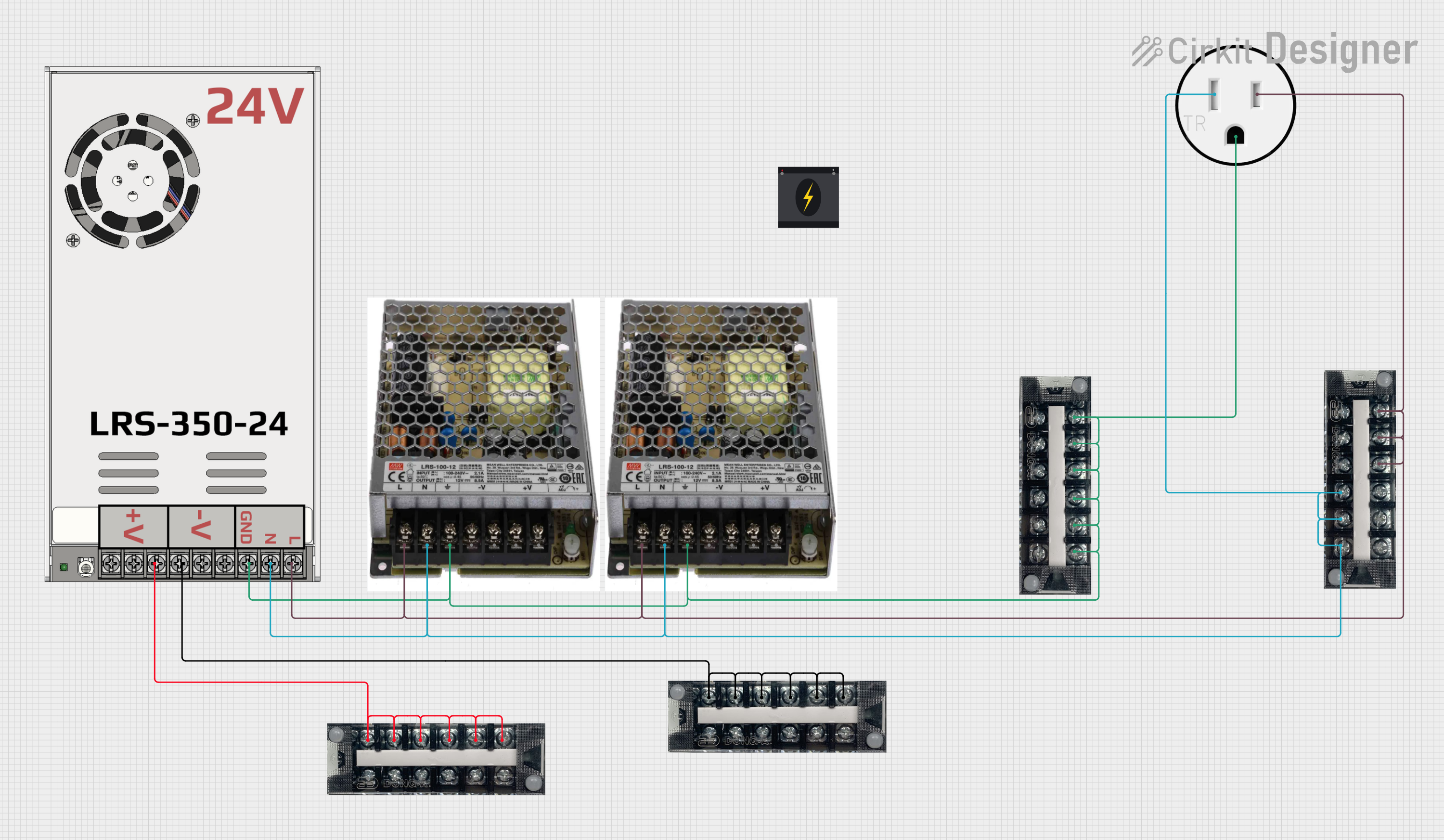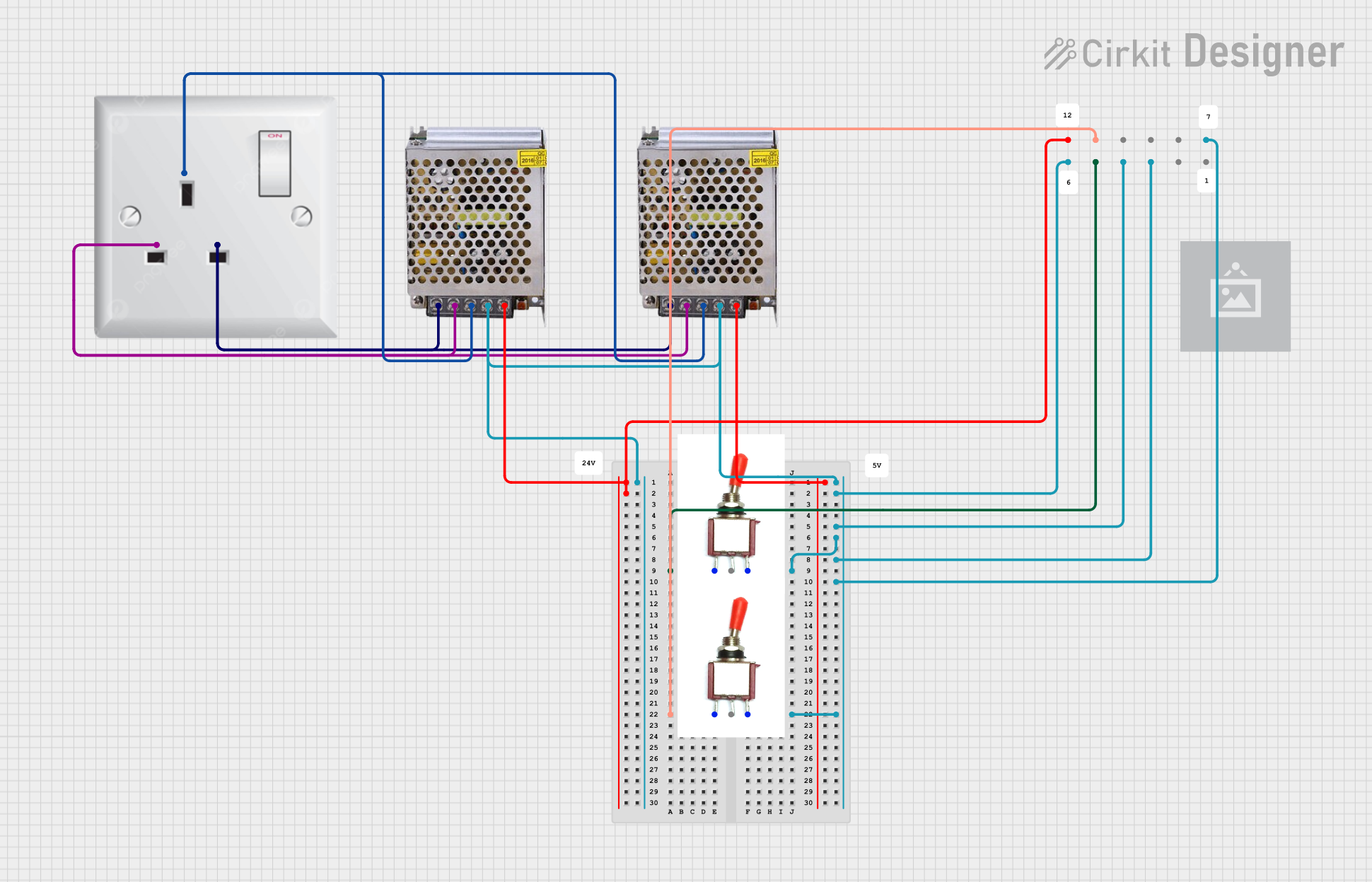
How to Use 2P SPLT: Examples, Pinouts, and Specs

 Design with 2P SPLT in Cirkit Designer
Design with 2P SPLT in Cirkit DesignerIntroduction
The 2P SPLT (2-Pole Splitter) is a versatile electronic component designed to divide a single input signal into two separate output paths. It is commonly used in audio and radio frequency (RF) applications to distribute signals efficiently without introducing significant loss or distortion. This component is ideal for scenarios where a single signal source needs to drive multiple devices or circuits.
Explore Projects Built with 2P SPLT

 Open Project in Cirkit Designer
Open Project in Cirkit Designer
 Open Project in Cirkit Designer
Open Project in Cirkit Designer
 Open Project in Cirkit Designer
Open Project in Cirkit Designer
 Open Project in Cirkit Designer
Open Project in Cirkit DesignerExplore Projects Built with 2P SPLT

 Open Project in Cirkit Designer
Open Project in Cirkit Designer
 Open Project in Cirkit Designer
Open Project in Cirkit Designer
 Open Project in Cirkit Designer
Open Project in Cirkit Designer
 Open Project in Cirkit Designer
Open Project in Cirkit DesignerCommon Applications and Use Cases
- Audio Systems: Splitting audio signals to feed multiple amplifiers or speakers.
- RF Systems: Distributing RF signals to multiple receivers or antennas.
- Test and Measurement: Routing signals to multiple test instruments.
- Communication Systems: Splitting signals in broadcasting or telecommunication setups.
Technical Specifications
Key Technical Details
| Parameter | Value |
|---|---|
| Signal Type | Audio, RF |
| Frequency Range | 20 Hz to 3 GHz (typical) |
| Insertion Loss | ≤ 1 dB |
| Isolation | ≥ 20 dB |
| Impedance | 50 Ω or 75 Ω (depending on model) |
| Maximum Input Power | 1 W (typical) |
| Operating Temperature | -40°C to +85°C |
| Connector Type | SMA, BNC, or solder terminals |
Pin Configuration and Descriptions
The 2P SPLT typically has three terminals: one input and two outputs. The pin configuration is as follows:
| Pin Number | Label | Description |
|---|---|---|
| 1 | IN | Signal input terminal |
| 2 | OUT1 | First signal output terminal |
| 3 | OUT2 | Second signal output terminal |
| - | GND (if any) | Ground connection (optional, for shielded models) |
Usage Instructions
How to Use the 2P SPLT in a Circuit
- Connect the Input Signal: Attach the signal source (e.g., audio output, RF generator) to the
INterminal of the 2P SPLT. - Connect the Outputs: Connect the devices or circuits that need the split signal to the
OUT1andOUT2terminals. - Impedance Matching: Ensure that the connected devices match the impedance of the splitter (e.g., 50 Ω or 75 Ω) to minimize signal reflection and loss.
- Power Handling: Verify that the input signal power does not exceed the maximum input power rating of the splitter.
Important Considerations and Best Practices
- Frequency Range: Ensure the signal frequency is within the specified range of the splitter to avoid performance degradation.
- Isolation: Be aware of the isolation rating to prevent crosstalk between the output paths.
- Shielding: For RF applications, use shielded cables and connectors to minimize interference.
- Load Balancing: Connect similar loads to both outputs to maintain signal integrity and balance.
Example: Using the 2P SPLT with an Arduino UNO
While the 2P SPLT is not directly connected to an Arduino UNO, it can be used in conjunction with audio or RF modules interfaced with the Arduino. For example, if you are splitting an audio signal to feed two amplifiers controlled by the Arduino, the setup might look like this:
// Example: Controlling an audio signal splitter setup with Arduino
// This code assumes the Arduino is controlling amplifiers connected to the 2P SPLT
const int amp1ControlPin = 9; // Pin to control amplifier 1
const int amp2ControlPin = 10; // Pin to control amplifier 2
void setup() {
pinMode(amp1ControlPin, OUTPUT); // Set amplifier 1 control pin as output
pinMode(amp2ControlPin, OUTPUT); // Set amplifier 2 control pin as output
// Initialize both amplifiers to OFF state
digitalWrite(amp1ControlPin, LOW);
digitalWrite(amp2ControlPin, LOW);
}
void loop() {
// Example: Turn on amplifier 1 and off amplifier 2
digitalWrite(amp1ControlPin, HIGH); // Enable amplifier 1
digitalWrite(amp2ControlPin, LOW); // Disable amplifier 2
delay(5000); // Wait for 5 seconds
// Example: Turn on amplifier 2 and off amplifier 1
digitalWrite(amp1ControlPin, LOW); // Disable amplifier 1
digitalWrite(amp2ControlPin, HIGH); // Enable amplifier 2
delay(5000); // Wait for 5 seconds
}
Troubleshooting and FAQs
Common Issues Users Might Face
Signal Loss:
- Cause: Impedance mismatch or excessive cable length.
- Solution: Use cables with the correct impedance and minimize cable length.
Crosstalk Between Outputs:
- Cause: Poor isolation between output paths.
- Solution: Use a splitter with a higher isolation rating or ensure proper grounding.
Distorted Signal:
- Cause: Input signal power exceeds the splitter's maximum rating.
- Solution: Reduce the input signal power to within the specified range.
Interference in RF Applications:
- Cause: Lack of shielding or improper cable connections.
- Solution: Use shielded cables and connectors, and ensure secure connections.
Solutions and Tips for Troubleshooting
- Verify Connections: Double-check all connections to ensure they are secure and correctly matched.
- Test with a Known Signal: Use a signal generator to test the splitter's performance before integrating it into a larger system.
- Inspect for Damage: Check the splitter and cables for physical damage that could affect performance.
- Use a Spectrum Analyzer: For RF applications, use a spectrum analyzer to identify and resolve interference issues.
By following these guidelines, the 2P SPLT can be effectively used in a variety of signal distribution applications.